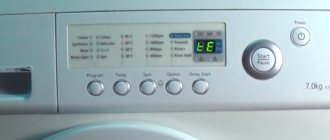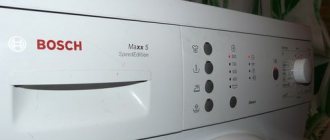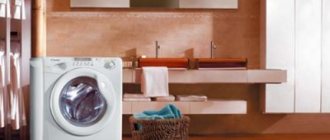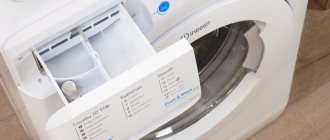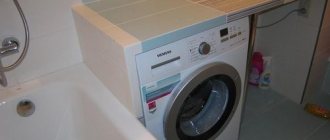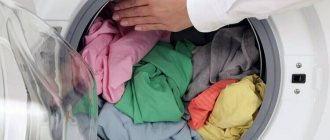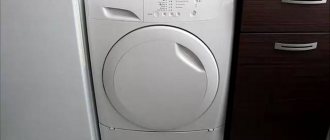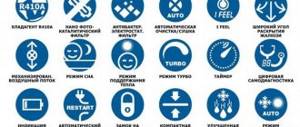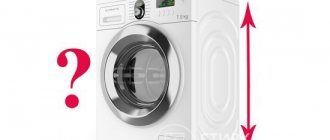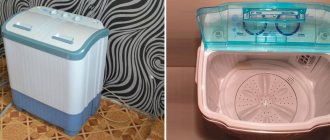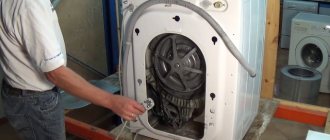Types of dryers
The general principle of such devices is that they accelerate the natural drying process using a stream of hot air. How exactly this principle is implemented depends on the specific type of unit. Conventionally, they are divided into the following groups:
- Drum dryer . Its design resembles an automatic washing machine, and the main part that does the main work is the rotating drum. Unlike a washing machine, not water is supplied to the drum of this device, but hot air, with the help of which the laundry is dried. In 60 seconds the drum can make more than 100 revolutions.
- Drying cabinet . The dimensions of such a device are quite large, since such a design is a large metal chamber that has either a double ceiling or a bottom with a fan and a heating element. The fan ensures the supply of air masses from the external environment, and the heating element makes the air entering the cabinet hot. Unlike the previous type, this device has a simpler design.
- Exhaust dryer . This is a simple device without a heat exchanger and a container for collecting water. Through a flexible hose, it is connected to the ventilation system of the house, where all the moisture released during the drying of clothes is supplied.
Exhaust-type dryers have practically gone out of production, so you can more often see drum-type dryers or drying cabinets on sale.
Basic indicators
The performance and ease of use of a clothes dryer depends on a number of factors. It is worth choosing a unit with certain characteristics, relying on your requests and needs. Please pay attention to:
- Load volume. The most popular models can dry 6-8 kg of laundry in 1 cycle. There are units with smaller and larger loading volumes. It’s worth focusing on the volume of the washing machine’s tank, so that you don’t have to divide each load of laundry or start the appliance half-empty.
- Energy class. This indicator will determine how much the electricity bill will increase after purchasing and starting to use the equipment. Class A or B is preferred.
- Power. The higher this indicator, the faster the laundry will dry. But before you give preference to the most powerful model, you should make sure that the wiring at home can withstand such a load.
- Drum rotation type. There are 2 varieties: a drum rotating alternately in both directions and in one direction. The second one is usually equipped with paddles for shaking the laundry. The second type is preferable, since it puts less load on the engine, and such a machine will last longer.
- Water drain type and container full indication. The condensing type is preferable.
A balanced and competent analysis of the main indicators will allow you to choose exactly the model that will make life easier, will not take up too much space, and will save you from additional costs in pursuit of unnecessary functions.
How do tumble dryers work?
They come in several types, but have a similar design and operating principle. So, let’s take a closer look at what drum dryers are in general.
Construction device
To understand the principle of operation of the unit, you should first familiarize yourself with its design. As a rule, it consists of the following elements:
- control panel, which contains an electronic display, drying mode selector, auxiliary function buttons;
- drive belt that connects the motor to the tank;
- drying drum in which things are dried;
Modern electric dryers have a tank light, which allows you to monitor the condition of your laundry and also makes loading and unloading easier. - an electric motor and a heat exchanger, in which cold and hot air flows move through two channels, due to which the air is cooled and condensate is subsequently released;
- heating element (heating element), which heats air masses before they enter the drum with things;
- a fan that captures cold air masses and sets them in the right direction after warming up;
- a container for collecting condensate, which can be located in the lower or upper part of the panel, where the powder receiver is located in washing machines (water must be drained from the container regularly so that new condensate does not spill out);
- air intakes with fluff filters that absorb dust and particles of debris that come with air flows (filters should be cleaned at least once a month).
A detailed diagram of the unit is shown in the figure:
Inside the drum
As a rule, the dryer drum is made of stainless steel, and more modern models have a honeycomb structure that promotes the formation of a thin air cushion between the laundry and the walls of the drum. This makes drying very gentle, so even the most delicate items can be tossed into the drum.
Manufacturers also pay great attention to the shape of laundry grips. These are the mixing ribs inside the drum. For example, in some models, when drying, they move along a trajectory that resembles the number “8,” which contributes to the economical operation of the device’s motor. There are models with periodic reverse rotation, but their motor is subject to greater loads during operation.
Drying can be done at different speeds - from 50 to 100 rpm. So, when drying jeans, you can set the maximum speed, but delicate items require a more gentle mode - no more than 60-70 rpm.
Principle of operation
Tumble dryers work on the following principle:
- The air passes through fluff filters and is directed by a fan to the part of the device in which the heating elements are located.
- The air is heated using a heating element, and the heating temperature varies from 50 to 70 degrees.
- After heating with the help of a fan, the air is directed into the main element of the dryer - into the rotating drum.
- Hot air removes moisture from wet laundry and then falls to the heat exchanger.
- In the heat exchanger of the device, the air gets rid of unnecessary moisture and cools down.
- The cooled air again begins to move towards the heating elements and repeats the entire process of its “movement”. Thus, there is a continuous circulation of air masses, which allows the laundry to dry.
The described device operates from the network and its power per cycle is 4 kW. Over the entire period of drying clothes, power consumption can range from 1500 to 2300 W, depending on the model of the household appliance and its manufacturer.
How to use?
There are different models of dryers, but they are all operated according to the following instructions:
- Load laundry . It should be pre-wrung in a washing machine or by hand. It is important that the volume of laundry matches the capacity of the device.
- Set mode . The choice depends on the material of the clothing. In addition, you can set the drying time and the residual moisture level of things.
- End the cycle . You need to take out the laundry and iron it or put it in the closet, depending on the degree of humidity.
- Remove debris from fluff filters . This procedure should not be ignored, otherwise filters clogged with debris will not be able to pass air masses properly, which will certainly affect the quality of drying.
- Get rid of condensation . Once the drying cycle is completed, you need to take out the condensate container and pour out all the water. If the system is drainage, then moisture will enter the ventilation system on its own, so nothing needs to be removed.
You can reload the machine with a new batch of laundry after a break of 40-60 minutes.
Additionally, read the article on the website on how to use a washing machine.
Clothes dryer: excess or justifiable necessity
A clothes dryer is a device whose purpose is to dry all kinds of textiles in the shortest possible time.
The drying machine provides quick drying of any type of textile
The first automatic dryer was created in 1938 by Ross Moore in the USA. Since then, the invention has gone through a long journey of transformations and improvements, but to this day it has not been fully appreciated.
Drying clothes using a dryer is especially important:
- in the conditions of a modern city, replete with dust and exhaust gases that affect laundry that dries naturally;
- in families with small children due to frequent and large volumes of washing;
- in rooms with a disturbed microclimate to avoid increasing humidity levels;
- if it is not possible to dry clothes in the traditional way (lack of a balcony or loggia, etc.).
Advantages and disadvantages of clothes drying machines
The advantages of drying machines are:
- drying regardless of weather conditions;
- high drying speed;
- the ability to dry large volumes of laundry;
- eliminating the possibility of laundry drying out;
- no need for ironing (depending on the operating mode and type of device);
- an individual approach to drying products (depending on the material of manufacture, the desired result or drying time, etc.);
- minimal human participation in the drying process.
The disadvantages of clothes drying machines include:
- high cost of the device;
- energy intensity;
- bulkiness;
- noise during operation (presence and level depends on the type and model of the device);
- depending on the model, there may be a need to connect to ventilation and/or sewerage.
Types of drum dryers
As noted earlier, drum dryers, in turn, are divided into several main types, each of which can be found below.
Condensation
Such machines are in greatest demand because they do not require special installation conditions. This is due to the fact that they are equipped with a special container where moisture accumulates after drying. In order for the machine to work properly, this container must be periodically cleaned of water. It is best to do this after each drying cycle.
After loading the tank, selecting the drying program and pressing the “Start” button on the control panel, the drying process starts according to this principle:
- The air in the chamber heats up, and the drum rotates in parallel and mixes the laundry.
- Air heated to the specified temperature blows on the laundry, under the pressure of which moisture leaves it.
- The moist air passes through a heat exchanger where it is cooled and dehydrated.
- The resulting water is accumulated in a special reservoir, and the cooled air is again heated by a thermoelectric heater and blows on the laundry again.
You can clearly see the operating principle of such a dryer in the diagram:
Condensing machines may also have a drainage system. In this case, the condensate will drain into the sewer system on its own.
Modern models of such dryers are often equipped with an additional “steam smoothing” program. In this mode, before starting work, water is “sprayed” in the drum, and then the smallest droplets form a small cloud. When exposed to high temperatures, it turns into steam, which helps smooth things out.
With heat pump
The design of such a machine provides for the presence of a cooling circuit. It intensively cools the air flow, thereby promoting faster condensation formation. This reduces the time required to dry laundry.
Ventilation
Such machines are considered obsolete, although they are still found on sale. They have the simplest design compared to other drum-type models. Their difference lies in the fact that they involve exit through a special hose into the ventilation passages. Thus, the installation of such a unit requires additional installation work.
You can clearly see the operating principle of ventilation dryers in the diagram:
How does a drying cabinet work?
The space inside such a dryer is organized according to the same principle as in a regular wardrobe for storing clothes. Such a device is a fairly large metal chamber with a heating element, which is responsible for heating the air, and a fan, which sets the direction of the air masses.
For the device to start working, you need to put things inside the closet on shelves or hang them on hangers, and then select one of the programs on the control panel and click on “Start”. The machine then operates in this order:
- Inside the cabinet, the air is heated by the heating element.
- The fan directs circulating air onto the items, creating the airflow necessary for drying.
- Things dry out under the influence of warm air, and moisture comes out along with the exhaust air masses. If the drying cabinet is located in a living room, it is worth either ventilating it or ensuring that humid air is removed from the room.
Drying cabinets are much cheaper than drum dryers, but they are larger and less convenient to use, and therefore are in less demand.
Drying types
Regardless of the type of design, dryers offer three main types of drying.
By time
The simplest type, according to which a person simply sets the drying time, after which the work cycle ends. The downside is that it is not always possible to correctly determine the drying time of things, so they may remain damp or dry out.
By degree of humidity
In this case, a person chooses the degree of residual moisture of things. The machine has built-in sensors that detect the air humidity inside the drum or cabinet and stop drying when the desired degree is reached.
This type involves two ways to control humidity. The first and most popular way is to select one of three modes, which look like this:
- optimal humidity for ironing clothes (things remain under-dried);
- drying in a “cupboard” (things dry almost completely);
- completely dry.
Modern models may have a second method of humidity control, which is carried out in this order:
- Current is passed through things.
- As long as things are wet, the circuit is closed.
- When things dry, the circuit opens and drying stops.
By type of clothing
In this case, a person chooses not the type of fabric, but the type of clothing that needs to be dried. For example, it could be jeans, shirts or outerwear. It is worth noting that some modern models also allow you to choose the type of fabric. They are more expensive, but more practical, because you can dry even the most delicate things in them without any fear, simply by choosing the right mode.
Some models are equipped with a special shelf-basket in which you can dry shoes, soft toys, etc. in a static position. Super- or extra-dryers are also available, which require high temperatures for blowing thick and multi-layered fabrics.
additional characteristics
Additional parameters do not significantly affect the performance and functionality of the machine. But they make its operation intuitive and comfortable. It is worth paying attention to:
- Availability of filters and ease of access to them. A high-quality dryer should be equipped with 1 or several filters, which collect lint, small debris, and wool. The filter must be removable and easily accessible.
- Control type. Setting the desired modes can be mechanical or electronic. They are equivalent, and you should choose the one you are used to. A nice addition could be a display that shows the time until the end of the drying process. No matter how high-tech the clothes dryer is, only individual requests will tell you how to choose the right model.
- A sufficient number of modes. In a high-quality drying machine, the owner himself can set not only the type of fabric that should be dried, but also the residual percentage of moisture. And even “order” light ironing.
- Ventilation mode. A very useful feature. With its help, you can refresh things without washing them. When using it, air at room temperature is supplied to the laundry.
- Additional options. These include child protection, drum illumination, button locking during operation, and delayed start. Such functions allow you to insure yourself against unforeseen situations.
Today, dryers are produced by almost all washing machine manufacturers. In your choice, you can also focus on the “name”; usually the controls of “relatives” are similar - and you can set the modes intuitively.
Choosing such a high-tech unit is not an easy task. But it’s still worth assessing your needs and studying all the intricacies. And then drying and ironing, which poison life and take away time that can be spent with family, will no longer be a problem.
Washing machines with drying function
The operating principle of such a washing machine is no different from the operating principle of a drum dryer. However, it should be taken into account that the laundry in such a unit will have to be dried in two approaches. The fact is that in such washing machines the drum volume is not large enough, so it will not be possible to dry all the washed clothes at once. So, it will need to be divided into two parts and dried twice.
The service life of a washing machine with a clothes drying function is much shorter than that of individual devices, and the cost is much higher, so it makes sense to consider purchasing two different machines - for washing clothes and for drying them.
